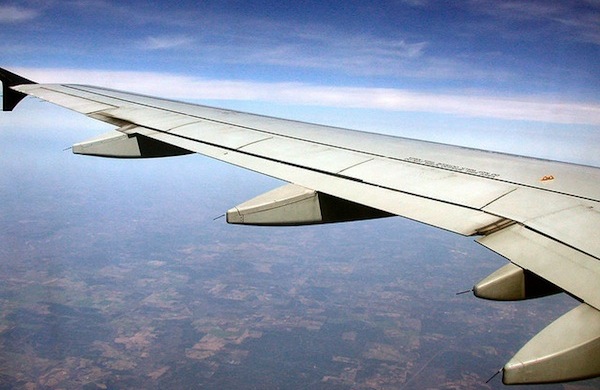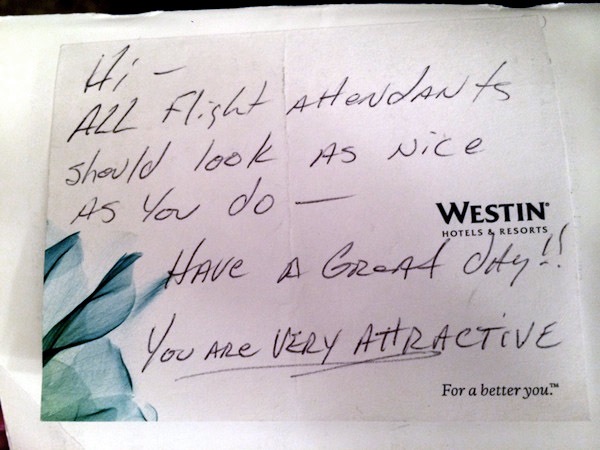GROUPON GUIDE TO CHICAGO
A Flight Attendant Dishes on Flying Etiquette and the Safest Seat on the Plane
BY: Jorie Larsen |Nov 24, 2014
Deals on Air-Inclusive Trips

✈ 4-Night All-inclusive Cartagena Vacation from Travel by Jen
45% discount_off
✈ 4-Night All-inclusive Cartagena Vacation w/ Air at the Grand Sirenis Cartagena from Travel by Jen

✈ Kauaʻi Adventure: Road Trip with Flights, Car & Stay
20% discount_off
✈ Kaua'i Adventure: Explore by Car, Flight & Stay by Worldee

✈ 10-Day Bangkok, Chiang Mai & Phuket Getaway – From Weekender Breaks
ORD, Chicago • 14.9 mi
30% discount_off
✈ 10-Day Bangkok, Chiang Mai & Phuket Getaway – From Weekender Breaks

✈ 8-Day Rome, Naples & Sorrento Getaway w/ Air – From Weekender Breaks
ORD, Chicago • 14.9 mi
30% discount_off
✈ 8-Day Rome, Naples & Sorrento Getaway with Air – From Weekender Breaks

✈ 7-Day Ultimate Dubai Desert Trip - Flights & Hotel from Worldee
Dubai, Dubai • 1000+ mi
20% discount_off
✈ 7-Day Ultimate Dubai Desert Trip - Flights & Hotel from Worldee
Deals on International VacationsOther Deals in chicago

✈ 8-Day Rome, Naples & Sorrento Getaway w/ Air – From Weekender Breaks
ORD, Chicago • 14.9 mi
30% discount_off
✈ 8-Day Rome, Naples & Sorrento Getaway with Air – From Weekender Breaks

✈ 6-Day Dublin Vacation with Air – From Weekender Breaks
ORD, Chicago • 14.9 mi
30% discount_off
Weekender Break

Trending
Mystery Getaway: One Price, Surprise Destination with Flights & Hotel
Los Angeles, Los Angeles • 1000+ mi
78% discount_off
Mystery Getaway: Europe, Asia, Caribbean, Miami & More

✈ Colorado Springs Road Trip: 5 Days with Air, Car & Stay from Worldee
Colorado, Colorado • 965.5 mi
20% discount_off
✈ Colorado Springs Road Trip: 5 Days with Air, Car & Stay from Worldee

✈ 4-Night Mystery Adventure: Iceland Getaway with 3-Star Hotel & Air
Reykjavik, Reykjavik • 1000+ mi
55% discount_off
✈ 4-Night Mystery Adventure: Iceland Getaway with 3-Star Hotel from JetSet Vacations

✈ Paris: 5-Day Getaway with Air & Hotel from Worldee
Paris, Paris • 1000+ mi
20% discount_off
✈ Paris: 5-Day Getaway with Air & Hotel from Worldee

✈ 8-Day Paris & Amsterdam Vacation with Air – From Weekender Breaks
Paris, Paris • 1000+ mi
30% discount_off
✈ 8-Day Paris & Amsterdam Vacation with Air – From Weekender Breaks

✈ 8-Day Barcelona, Madrid & Lisbon with Sintra Tour & Air
Lisbon, Lisbon • 1000+ mi
30% discount_off
✈ 8-Day Barcelona, Madrid & Lisbon Vacation with Air from Great Value Vacations

✈ 8-Day Berlin & Krakow Vacation with Air
Berlin, Berlin • 1000+ mi
30% discount_off
✈ 8-Day Berlin & Krakow Vacation with Air from Weekender Breaks

✈ 8-Day Amsterdam and Paris Vacation w/ Air from Great Value Vacations
Paris, Paris • 1000+ mi
$999
Great Value Vacations

✈ 8-Day London, Iceland & Paris Vacation with Air
Reykjavík, Reykjavík • 1000+ mi
30% discount_off
✈ 8-Day London, Iceland & Paris Vacation with Air

✈ 7-Day Porto and Lisbon Vacation w/ Air from Great Value Vacations
Oporto, Oporto • 1000+ mi
$799
✈ 7-Day Porto and Lisbon Vacation w/ Air from Great Value Vacations

✈ Italian Dream Roadtrip: Naples, Campania & Amalfi Coast from Worldee
naples, naples • 1000+ mi
20% discount_off
✈ Italian Dream Roadtrip: Naples, Campania & Amalfi Coast from Worldee

✈ 8-Day Prague, Vienna & Budapest Vacation with Air
Prague, Prague • 1000+ mi
30% discount_off
✈ 8-Day Prague, Vienna & Budapest Vacation with Air from Weekender Breaks

✈ 16-Day Guided Spain, Morocco & Portugal Vacation with Air
Lisbon, Lisbon • 1000+ mi
$3,299
✈ 16-Day Guided Spain, Morocco & Portugal Vacation with Air from Great Value Vacations






